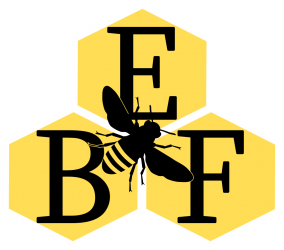| The new queen is getting to work |
Like any good beekeeper, we had read a lot of beekeeping books. But, as we’ve found so far this year, reading about something and doing it in real life is completely different. Likewise, actually going through the process of raising a queen is just not the same as reading about it. The process can take a long time, as the queens have to develop, hatch, mature, mate, and start laying. And a lot can go wrong at any point. We humbly resigned any notion of harvest a significant amount of honey this year, and decided that we really needed hands-on experience so when we’re faced with this situation again we know what to do. Since we are managing only two hives, we could afford to take our time to focus on this one hive and really understand the process of allowing a hive to requeen itself. This would not only be beneficial to a full working hive, but also to raising nucs and queens. So while requeen with a mature queen would have short-term benefits to allow us to collect (and sell) a lot of honey, the long-term benefits to us becoming better beekeepers through this experience would surely be worth it. Knowledge is worth more than honey anyway.
After realizing the colony was raising supersedure cells, we looked through the hive for the queen to be sure we didn’t accidentally kill her. Sure enough, she was there. We didn’t pinch her off, but wanted the colony to take care of the situation as naturally as possible. That would mean that upon the hatching of a replacement queen, we would have a two-queen hive. After the new queen is mated, the old queen would be killed or kicked out of the hive. So, we closed up the hive with the queen cell and let them do their thing.
The next week we opened up the hive and saw the queen had hatched, but didn’t take the time to track her down.
The next week we again checked the hive. We saw no queen and no eggs. Hmmm. It had been rainy weather, so perhaps her mating flight was delayed and we just missed her when inspecting?
Another week went by. Again, we did not find any queen – new or old. And no eggs. Crap. Our plan to allow the hive to raise their own queen was not panning out. And the hive was out of eggs to raise new queen cells. Meanwhile, the nuc that we made a couple weeks prior was doing great. The queen had hatched and was starting to lay. We decided to use this nuc as our backup plan, and merged it with the hive.
| First, cover the hive with a sheet of newspaper |
| Next, place the new colony on top of the newspaper. That’s it! |
We placed the inner and outer covers on and let the bees do their thing. The fully merged hive should be ready to go by next week. That was probably the simplest thing we had done all summer. If only everything else was so simple.


